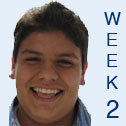Learning Languages
Excerpt From "Language Language", Chomsky and Language Learning (continued)
Bruner's LASS
Let us look closely at this fourth objection. The psychologist, Jerome Bruner(5), holds that while there very well may be, as Chomsky suggests, a Language Acquisition Device, or LAD, there must also be a Language Acquisition Support System, or LASS. He is referring to the family and entourage of the child.
If we watch closely the way a child interacts with the adults around her, we will see that they constantly provide opportunities for her to acquire her mother - tongue. Mother or father provide ritualized scenarios - the ceremony of having a bath, eating a meal, getting dressed, or playing a game - in which the phases of interaction are rapidly recognized and predicted by the infant.
It is within such clear and emotionally charged contexts that the child first becomes aware of the way in which language is used. The utterances of the mother or father are themselves ritualized, and accompany the activity in predictable and comprehensible ways. Gradually, the child moves from a passive position to an active one, taking over the movements of the caretaker, and, eventually, the language as well.
Bruner cites the example of a well-known childhood game, in which the mother, or other caretaker, disappears and then reappears. Through this ritual, which at first may be accompanied by simple noises or ‘Bye-bye Hello', and later by lengthier commentaries, the child is both learning about separation and return and being offered a context within which language, charged with emotive content, may be acquired. It is this reciprocal and affective nature of language that Chomsky appears to leave out of his hypotheses.
Bruner's conception of the way children learn language is taken a little further by John McNamara, who holds that children, rather than having an in-built language device, have an innate capacity to read meaning into social situations. It is this capacity that makes them capable of understanding language, and therefore learning it with ease, rather than an LAD.
Conclusion
Chomsky, then, sees the child as essentially autonomous in the creation of language. He is programmed to learn, and will learn so long as minimal social and economic conditions are realized. In Bruner's version, the program is indeed in place, but the social conditions become more important. The child is still an active participant, is still essentially creative in her approach to language acquisition, but the role of the parents and other caretakers is also seen as primordial. Finally, McNamara sees language learning as being subordinate to and dependent upon the capacity to understand and participate in social activities.
At this time, please stop and complete the following assignment.
Week 2 Assignment Part A: Write paragraph summarizing Chomsky’s arguments regarding language development and a paragraph summarizing the views of his critics.
HINT TO PARTICIPANT: Save your word-processed document as “Week 2 Assignment Upload." You will add to it in the next section and upload this document at the end of the week.








